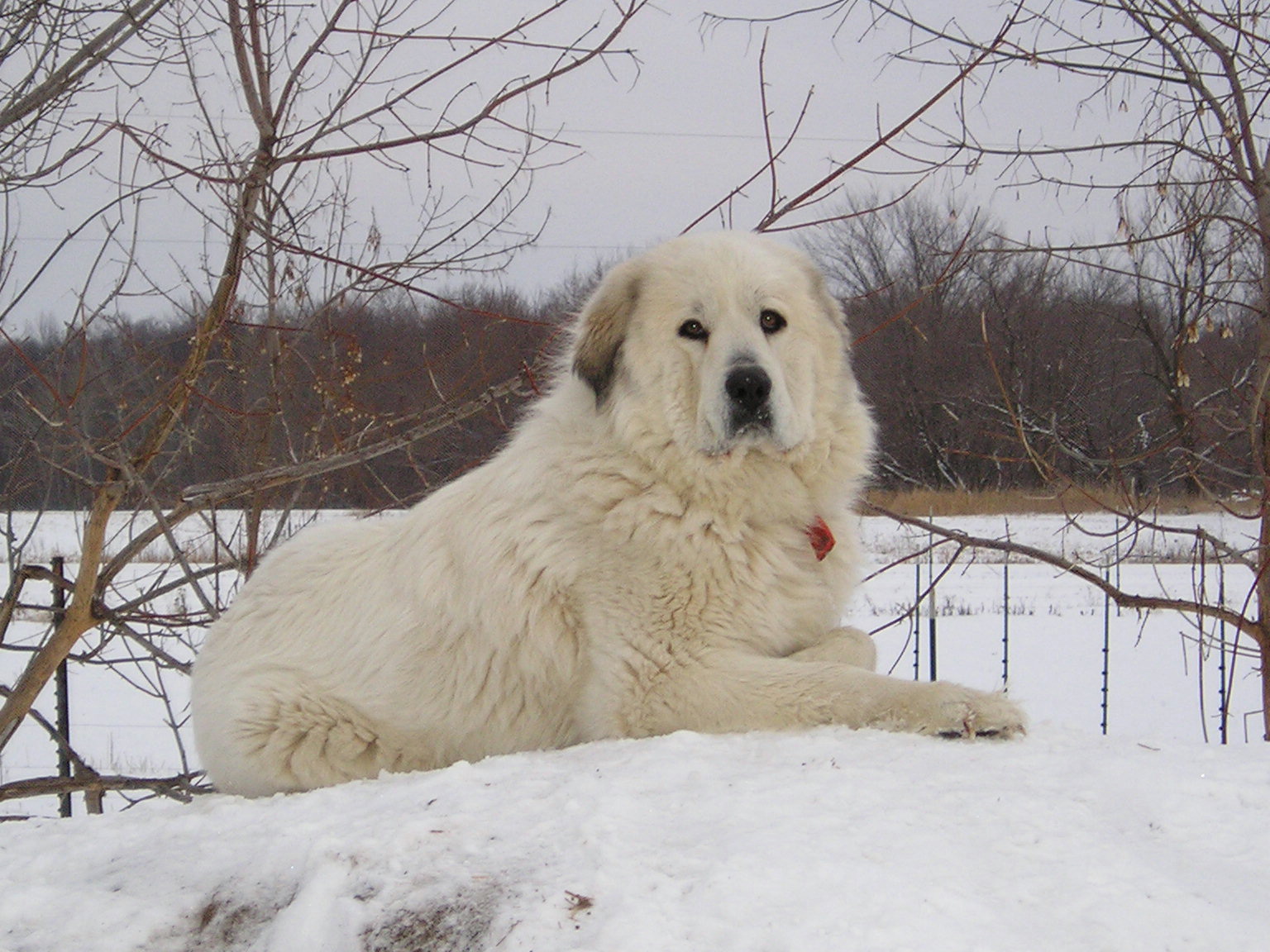Finding Loving Homes for Our Lovable Dogs
Frequently Asked Questions:
What is a "Great Pyrenees"?
Great Pyrenees are a very large breed of 100+ pounds. Color varies from pure white to white with brown, gray or badger markings. Eyes and nose pigment should be very dark. These giants are known for their natural kindness to their "herd" while still being great guardians. This combination of gentleness and strength added to their unmatched beauty makes them one of the best breeds available for working dogs, pets and/or show dogs.
Do I need a fenced yard?
This is a roaming breed so a visible, securely fenced yard is indeed necessary. An uncontained Pyr can roam for many miles. Also for obvious safety reasons (cars, dognapping, etc) a fence is mandatory.
Do they shed?
Great Pyrenees are a heavily coated breed and they do shed. A thorough brushing once a week will help with the problem of hair all over the house, but when a Pyr ”blows” coat the amount of fur around can be prodigious. This happens once a year—sometimes twice. If hair around the house bothers you, then a Pyr is not for you.
Do they drool?
Pyrs do drool if they are warm or anxious. Some drool more than others. As a rule, a Pyr doesn’t drool as much as a Saint Bernard or a Newfoundland. They are messy eaters and drinkers and a large amount of the contents of those dishes can be transferred to your floor.
Do they dig?
Pyrs will dig to make cool spots to lie down in the yard. Again some will dig more than others. Some escape artist Pyrs have been know to dig their way out of the yard under the fence.
Do they need a lot of room?
Pyrs are large dogs and need space - both indoors and out. They are also guard dogs and they bark to protect their domain. Although they have a low metabolism, Pyrs do need regular exercise to stay healthy and fit. Walks and a play area are both highly recommended.
Can I afford a Great Pyrenees?
The initial purchase price is only the beginning of the expense of owning a Great Pyr. Pyrs are large and grow fast until they reach maturity—usually at about 3 years of age. There are also the expenses for food, veterinary bills, shots, grooming supplies, etc. All this must be taken into account before purchasing any dog.
What is better - male or female?
This is a personal choice. The male is larger, showier and inclined to be more boisterous. The female is usually more maternal, somewhat smaller and much more inclined to be a homebody.
Can I "tie" my dog out in the backyard?
A Pyr should never be tied out. It promotes aggressiveness because the Pyr is not able to patrol the fence line to do its job. It can also be dangerous because the dog may wrap himself in the chain, or even hang himself. Particularly, never allow your dog to wear a choke collar unattended. A Pyr can catch a choke collar on a root or bush and eventually the dog could die of strangulation. A choke collar should be regarded as a training tool only.
Should I shave my Pyr in the summer?
Never shave a Pyrenees in the summer. The world's most beautiful dog requires a minimum of grooming care to stay beautiful. The Pyr coat actually insulates it and will help keep the dog cool in the summer heat. A Pyr's skin is very fair and therefore sensitive to the sun and if the coat is gone there will be nothing to protect it. The coat that grows back after shaving can actually make matting worse.
Do Pyrs make good therapy dogs?
The Pyrenees temperament of calmness, gentleness, patience and intelligence combine to bring comfort to those in need. There are endless opportunities for these dogs and their owners to find real happiness in giving to others. Studies show that when animals are used with people who have physical or emotional pain, there are actual, measurable, improvements physically, and a reaching out for the peace and love they bring. There is an immediate connection made between the dogs and children and when adults are involved the hesitancy felt at first soon gives way as they feel the peace and gentleness of the dog. The dogs bring smiles to the faces of the institutionalized and lonely. They help improve the quality of life for those in need.
Are they good livestock guardian dogs?
Guarding livestock is what Pyrs have been bred for thousands of years to do and their temperament is ideally suited to the work. To do their work they do not have to be “aggressive”, but they do have to be stable and self-confident. If they are stable they will not see everything as a threat but will assess the situation and devise an appropriate plan for protection. The Pyr that is confident in his ability to deal with man and beast can be approached and handled. A Great Pyr should never be aggressive to people.
